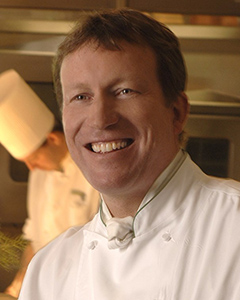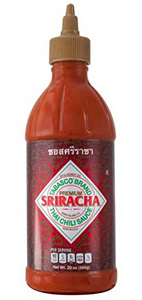Charles Carroll Named President of World Association of Chefs Societies
Wednesday, 29 April 2015 03:00
 Serving a term of 18 months, Carroll is joined by John Sloane of Macau as vice president of the global organization serving 10 million chefs from more than 105 nations.
Serving a term of 18 months, Carroll is joined by John Sloane of Macau as vice president of the global organization serving 10 million chefs from more than 105 nations.
Charles Carroll, CEC, AAC, executive chef of River Oaks Country Club, Houston, was recently named president of the World Association of Chefs Societies, or Worldchefs.
Worldchefs, founded October 1928 at the Sorbonne in Paris, is a global network of chef associations dedicated to maintaining and improving the standards of global cuisine. An elected executive committee and a board of continental directors that oversee the regions of Asia, Europe, Africa, Pacific and the Americas govern the organization.
“Worldchefs spans over 105 countries and 10 million chefs, and I am proud to be a part of this great team,” said Carroll. “The board is focused and excited about the next 18 months and we are dedicated to all our members around the globe. I encourage everyone to visit www.Worldchefs.org to learn more about what we are doing and our next congress in Athens, Greece, September 2016.”

 Hot sauce is becoming ubiquitous in homes and at foodservice outlets, according to recent NPD Group research. And while the classic Louisiana type still rules, it’s by far not the only hot seller, evidenced by spreading-like-wildfire sales of fruity habanero and chipotle varieties.
Hot sauce is becoming ubiquitous in homes and at foodservice outlets, according to recent NPD Group research. And while the classic Louisiana type still rules, it’s by far not the only hot seller, evidenced by spreading-like-wildfire sales of fruity habanero and chipotle varieties. The 10 best-selling categories have shifted since just 2013, and today, cheese is still tops, but refrigerated pasta, functional beverages and nut and seed butters show big gains. Why should we care? Because foodservice is an increasingly important sector to that industry, with growth of nearly 31% since 2012.
The 10 best-selling categories have shifted since just 2013, and today, cheese is still tops, but refrigerated pasta, functional beverages and nut and seed butters show big gains. Why should we care? Because foodservice is an increasingly important sector to that industry, with growth of nearly 31% since 2012. Fresh mango, in abundance this summer, delivers flavor, color, texture and nutrition to menus. To celebrate, Chef Allen Susser shares his recipe for a refreshing fruit salad.
Fresh mango, in abundance this summer, delivers flavor, color, texture and nutrition to menus. To celebrate, Chef Allen Susser shares his recipe for a refreshing fruit salad. The third installment in a series on effective professional-development activities performed by students outside of the classroom.
The third installment in a series on effective professional-development activities performed by students outside of the classroom.